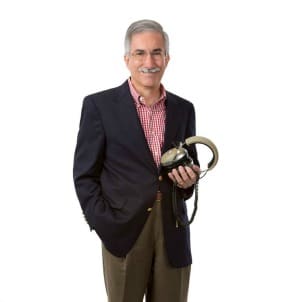
Broadcast attorney John Garziglia tells Radio Ink it’s unlikely the 250 mile waiver opportunity for AM operators would have been adopted by the FCC without the efforts of Cromwell CEO Bud Walters prosecuting the Tell City waiver (full disclosure: Garziglia represented Walters in the Tell City waiver case at the FCC). Walters’ began his journey for a waiver in Tell City, IN back in 2012. It was eventually denied, last year, but has now become the FCC’s model in its new rules (see next story).
Here Garziglia gives great detail on how AM broadcasters can take advantage of this new rule. “The 250 mile waiver is a business opportunity for AM stations to acquire an FM translator and move it up to 250 miles to re-broadcast the AM station. Filings for the 250 mile are expected to open sometime in early 2016 after an FCC three month “outreach effort” to Class C and Class D AM stations. For an AM station acquiring an FM translator and proposing to move it using the 250 mile waiver, assuming the applications are routinely processed by the FCC, the AM station should have authority to build and put the FM translator on the air within approximately 60 days of filing the applications at the FCC.”
“In 2017, the FCC will open an AM-only FM translator auction filing window for those AMs that are either unable to, or do not desire to, acquire and move an AM translator using the 250 mile waiver. This will be an auction filing window that, unlike the 250 mile waiver in which every day is a new filing day, will have a set window time period for the filing of FM translator applications to serve AM stations. Any FM translator application filed during that time period could conflict with any other application filed.”
“Once all the applications are filed in the 2017 AM-only FM translator auction filing window, the FCC will assess which are technically conflicting. Those that are not technically conflicting will be granted if in accord with the FCC’s rules and policies. Those that are technically conflicting will be given an opportunity to resolve the conflict. In the absence of the resolution of a technical conflict, the construction permit will be auctioned by the FCC to the highest bidder.”
“The first six months of filings under the 250 mile waiver will be limited to Class C and D AM stations. Thereafter, the 250 mile waiver will open to all AM classes for another three months. This is a description of the various classes of AM stations. If you do not know what class is your AM station, it can be easily looked up at fccinfo.com. Two AM classes will be listed – domestic which is the first class listed, and a “Region 2” class. It is the first class listed which is the relevant class for the 250 mile waiver eligibility.”
“To utilize either the 250 mile waiver, or the AM-only FM translator auction filing window, there must be an FM translator frequency available that is proximate to the AM station. The question of whether such an FM frequency is available, particularly in the more congested areas of our country, is a chore for a consulting engineer experienced in FM translator applications. The FCC has restricted the use of the 250 mile waiver and the AM-only FM translator auction filing window to a “one translator per AM basis”.
“Some AM stations may readily find available FM translator frequencies in their locale. Other AM stations may need to make a determination as to whether a low power, or a highly directional, FM translator is worth it, either with the 250 mile waiver or with the AM-only FM translator filing window.”
“There are many engineering aspects to locating a usable FM translator frequency for an AM station including second-adjacent channel waivers, the use of directional antennas, and lower power. Where there is a choice of frequencies, choosing the right one involves several considerations. I touch on some of these choice-of-frequency considerations in the second part of a five part series I wrote on FM translators titled “Location, Location, Location.”
“To utilize the 250 mile waiver, an AM station must locate an FM translator to purchase. Most AM stations will be surprised to find that there are likely hundreds of FM translators, both licensed and unbuilt construction permits, within the allowed-for 250 mile radius.”
“An easy way to list every FM translator within 250 miles of an AM station is to use the FCC’s “FM Query” search facility. Follow these five steps with FM Query: (1) under the “Service” drop-down box highlight “Translators, (2) under the “Search for FM Stations in a Frequency Range” drop-down box highlight “92.1 MHz – 221”, (3) scroll way down to “Stations Within a Radius” and put “402” in the “Radius” box, (4) put the AM station’s geographic coordinates in the “Center Coordinates” box, and (5) hit Search. A record of each FM translator within that 250 mile (402 kilometer) radius will appear. I suspect the number of FM translator licenses and unbuilt construction permits found within that 250 mile radius will be anything from a hundred or so up to almost one thousand.”
“The translators to inquire of first might be those that are still unbuilt construction permits. There are several reasons for this. First, the fact that a translator remains unbuilt may be evidence that there is not too much present value attached to it at its current location. Second, the permittee of an unbuilt translator is unlikely to have already spent money on an antenna that may not be usable if the translator is moved, and have a continuing obligation for transmitter site rent that might have to be assumed. Finally, the FCC will extend the expiration date of an unbuilt construction permit if the construction permit is acquired and moved under the 250 mile waiver, giving the translator permittee an incentive to enter into a 250 mile waiver transaction.”
“AM stations that are quick and nimble in both locating an FM translator frequency, and an FM translator to purchase for a suitable price, will have the advantage in the 250 mile waiver process. Applications to move translators will be filed on a first-come/first-serve basis. Therefore, an application once filed will cut-off later filed applications. To the extent that Class C and Class D stations are given a six month head start in the filing of the 250 mile waiver applications, and also a separate initial window in the later AM-only FM translator auction, Class B AM stations are truly disadvantaged by the adopted procedures.”








